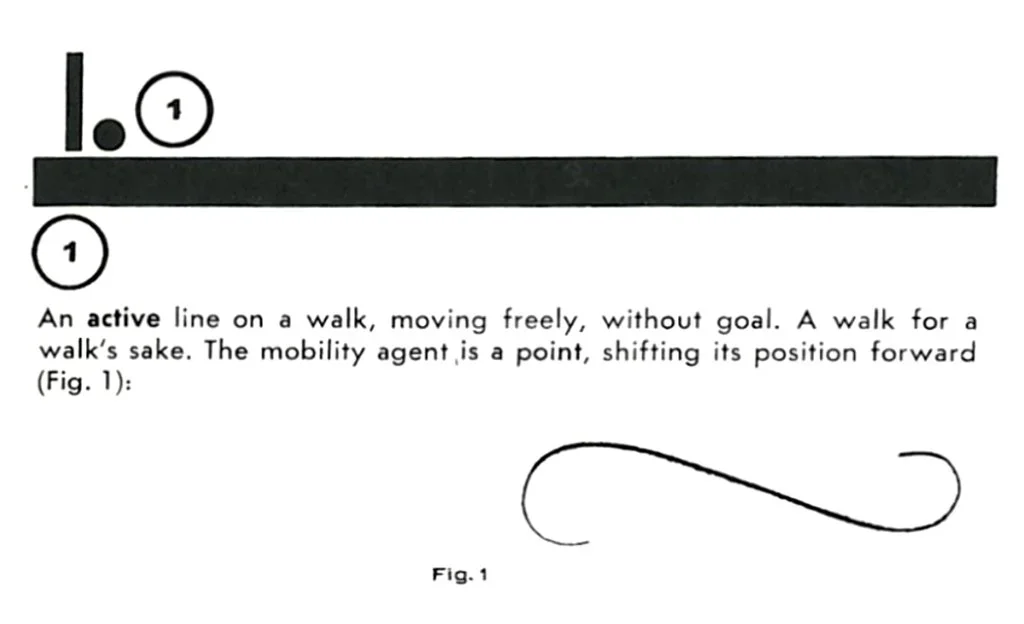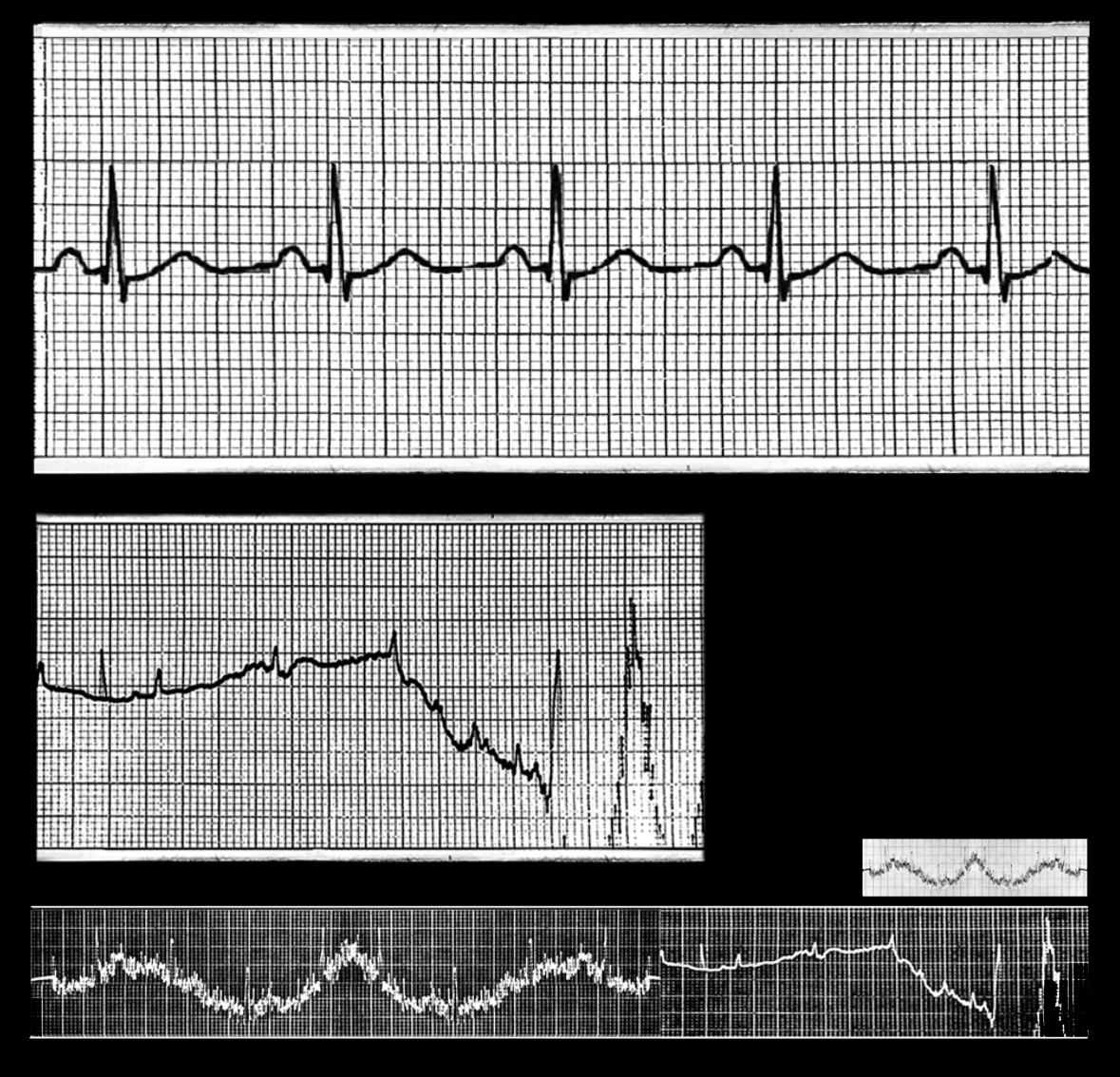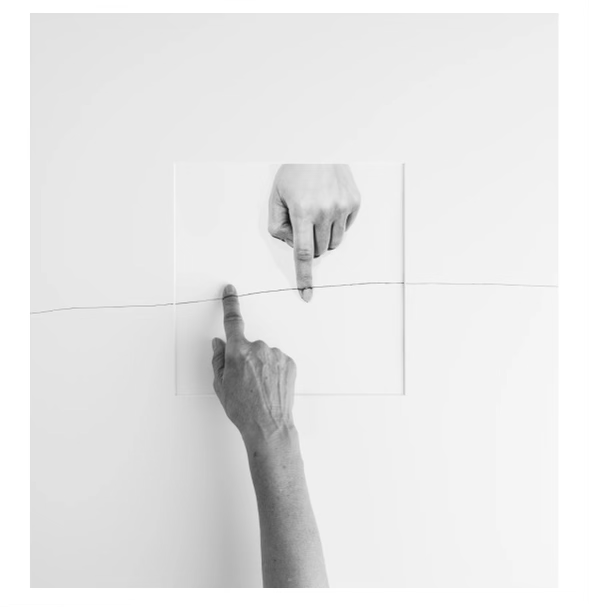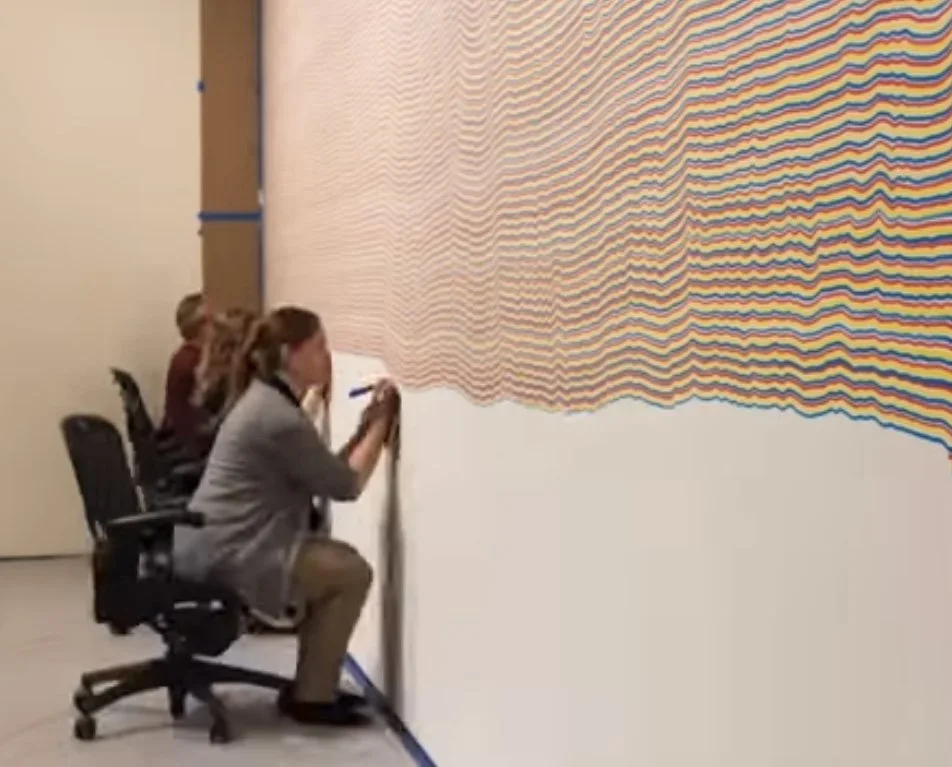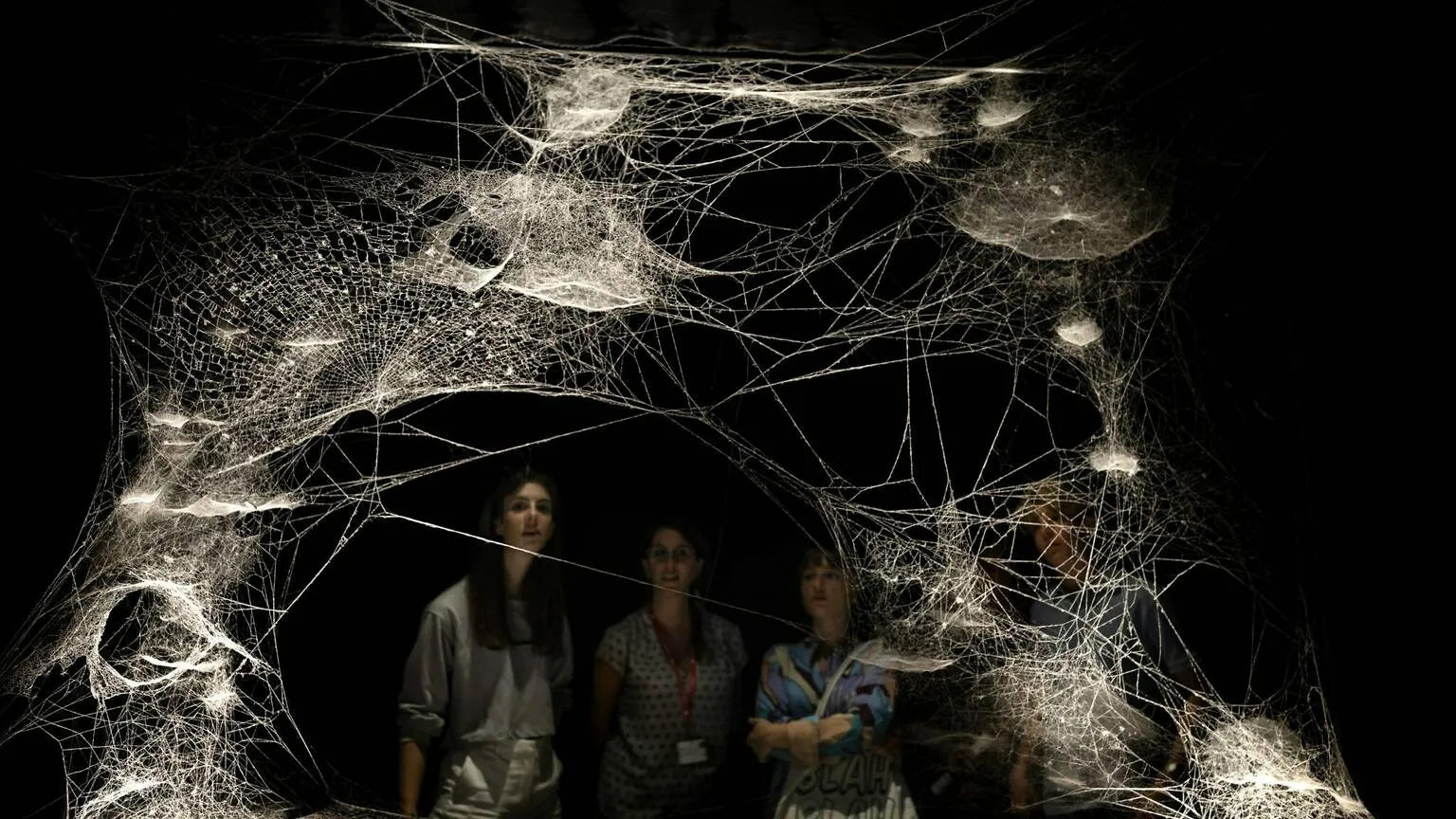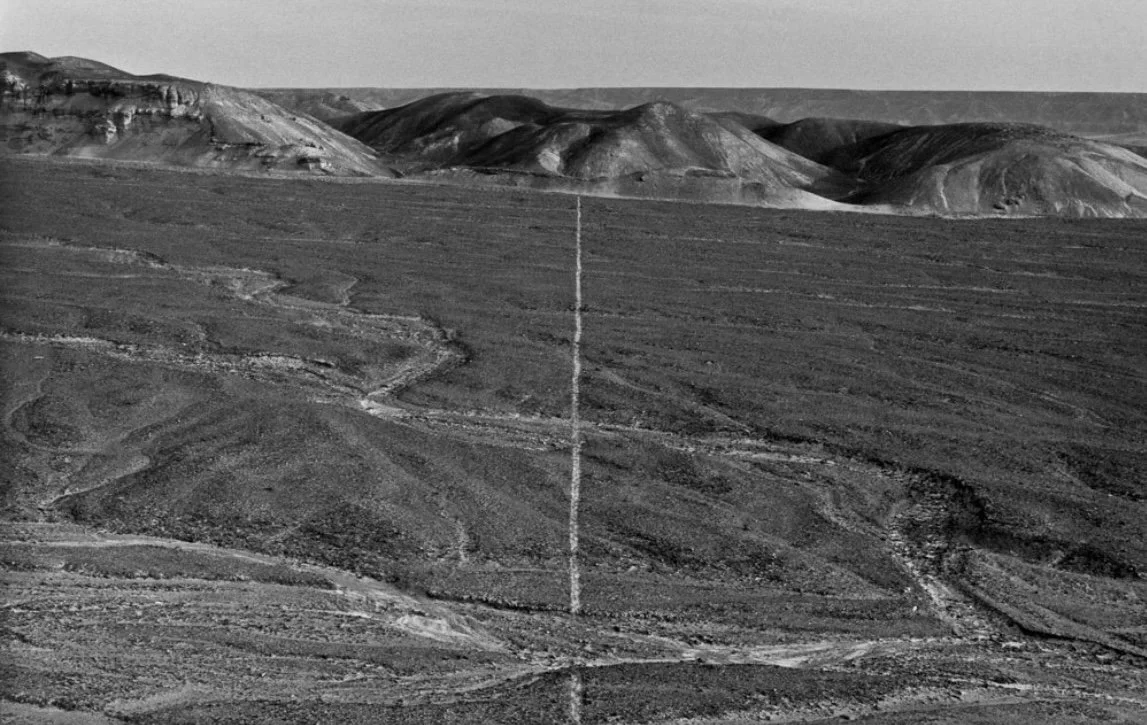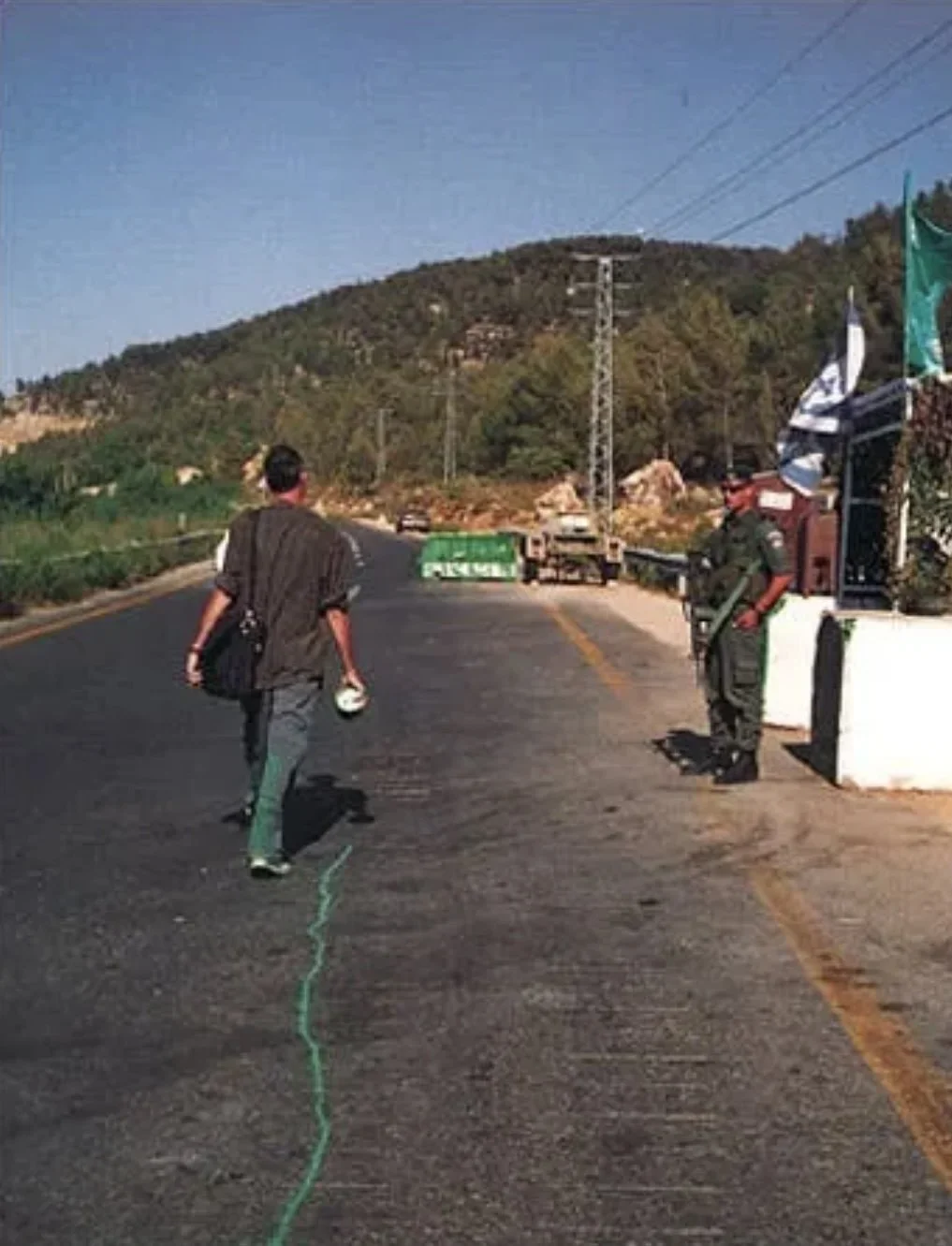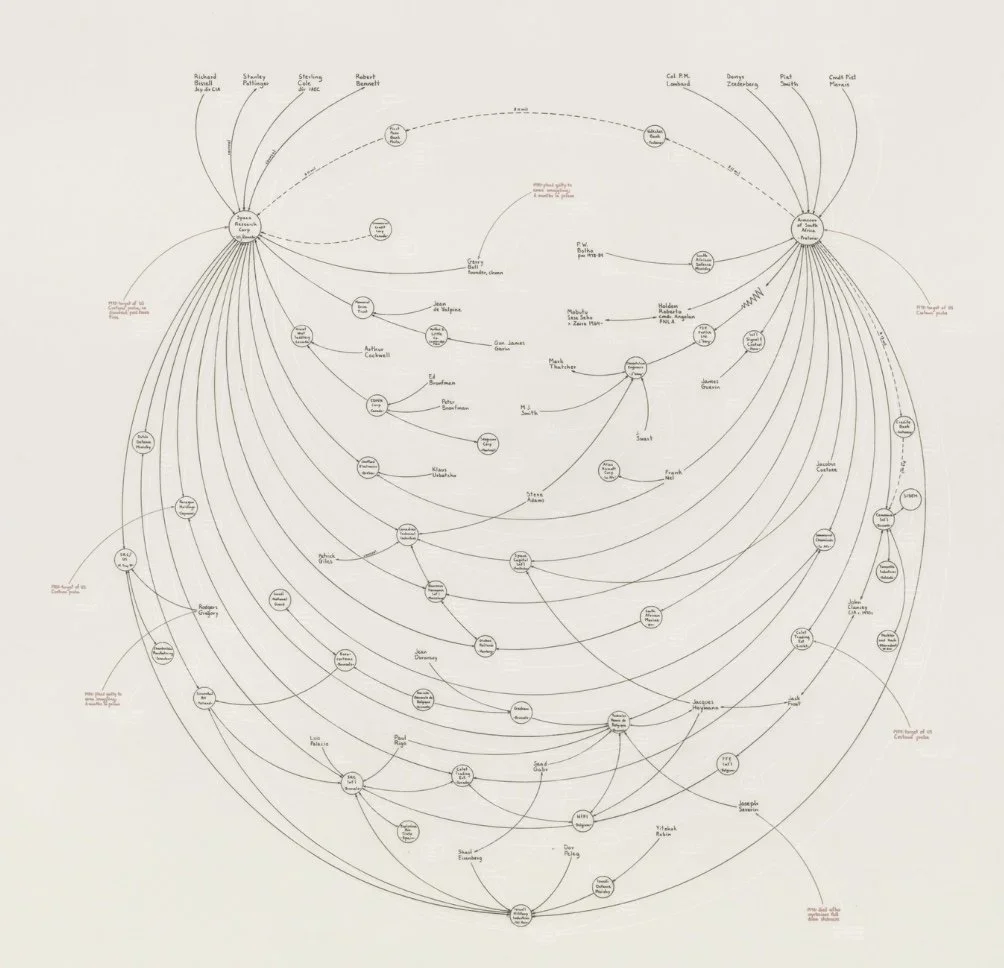Digital Exhibition: Walk the Line_
Curated by Dane Jensen
March 14, 2024
A line can connote many things, it can be used to connect or divide. It can define the boundary of an area of space—where it begins and ends—but can also be an endless or continuous form, without end. It can be seen as static or be perceived to be in motion. It can be something not to be crossed. If you are on the edge of a line, you are on a frontier—on the precipice of something new, perhaps something that has never been seen or thought of before. If you are “on the line” you are in a narrow liminal space, a non-place neither here nor there. As such, Walk the Line_ is a show about the use of line to fracture existing notions in art, one’s self and the world around us.
We begin with artist Paul Klee in his 1920s lectures at the Bauhaus School (which were combined into his book “Pedagogical Sketchbook” posthumously published in 1953). He referred to a line as “a point” that is “shifting its position forward.” Klee not only suggests something moving but also that this moving point—as a line—is an agent of progress. He posits that a line is “active” and “moving freely without goal”—furthering the notion that a line has the ability to define and equally remain undefined. It is the embodiment of something enigmatic, the very edge of one thing or another—perhaps akin to the horizon line at “magic hour,” which is neither day nor night. Walk the Line_ is an exhibition about artists who live in this place of liminal articulation and in many ways this show takes the same format—a digital show where no artwork is off limits. No shipping, no ceiling height to consider, no restrictions on what museum or private collection it might be owned by anywhere in the world. And, yet it must fit the narrow framework of Instagram of only a maximum of ten square images.
The artists included are ones who have pushed limits, challenged the notions of our conventions. They themselves,” walk the line,” in their ideas about how a line can be used not only in art but how and what it teaches us about ourselves and others within the complexity of our larger world.
As a viewer explores the show from one artwork to another, Walk the Line_—akin to Paul Klee’s diagram—starts with a point and moves outward and expands into the larger world. Starting with Klee’s teachings the exhibitions moves from an idea from the mind, to the body (Llano-Mejia, Marioni, and Porter), to an interaction between people (Lewitt), to an unlikely interaction between species (Saraceno), to a person’s intervention into the land (Long), to a divide between countries (Alys), to a vast sea of connected elements that span the globe (Lombardi). Walk the Line_ ‘s nine works come full circle, beginning and ending with a diagram.
1.
Paul Klee’s I.1, Fig. 1, circa 1925. Text and image are didactic tools for poetically defining a line—a prompt to open one’s mind to push beyond the ubiquity of this form that we don’t often think about but, yet, it semiotically ascribes meaning in its simplicity to our lives everyday.
Paul Klee (1979-1940)
Bauhaus School lecture notes (Diagram I.1, Fig.1), Circa 1925
Text and diagram
Excerpt from “Pedagogical Sketchbook” published in 1953
2.
Sandra Llano-Mejia In Pulso (1978) devised a way of creating a “self-portrait” by manipulating her heartbeat to alter the linear pattern that an electrocardiogram produces. In her manipulation of the machine, the peaks and valleys of the line appear as though she has died and come back to life repeatedly.
Sandra Llano-Mejia (b. 1951)
In Pulso, 1977-78
Installation, video and electrocardiograms
From the collection of the Museum of Modern Art, New York
3.
Liliana Porter Forty Years IIIA (hand over horizontal line, 1973),2013, uses a line to explore media, temporality, the body and space. She created the first of these images, a photograph of a drawing of a line on her hand, in 1973. Then four decades later she re-photographed her own hand and another line which extends infinitely outside the frame of the picture, leaving the viewer with a set of questions as to what is new, old, drawn or photographed and when and where is the beginning or end.
Liliana Porter (b. 1941)
Forty Years IIIA (hand, over horizontal line 1973), 2013
Chromogenic print
25 1/2 x 26 inches (64.8 x 66 cm.)
Edition of 5 plus 2 artist's proofs
One print is in the collection of the Solomon R. Guggenheim Museum, New York
4.
Tom Marioni’s Out-of-Body-Free-Hand-Circle, 2007-9, conceptual performance and “action drawing”, explores the limits of the body and is constructed of a continuous line that defines a previously undefined space. Each drawing is unique and is defined not only by the body in action but the amount of time dedicated to the performance, the drawing device used, the artist’s position and the force applied.
Tom Marioni (b. 1937)
Out-of-Body Free-Hand Circle, 2007/2009
Performance
(Installation shown; the Solomon R. Guggenheim Museum, New York)
5.
Sol Lewitt’s instructional Wall Drawing #797 (1995), creates a collaborative and inter-relational work which would not be possible without the participation of others. The instruction-based work calls for one person to draw a line across the wall. The line is inevitably flawed both from the inaccuracy of a hand-drawn line but also from the uneven yet subtle texture of a wall surface. The next person must try to accurately mimic that line but not touch the first one. So, each participant mirrors and magnifies the variance of the line before them to create a composition which is uniquely human and binds people together through that process.
Sol Lewitt (1928-2007)
Wall Drawing #797, October 1996
Photo documentation of the work in progress
Instructions:
"The first drafter has a black marker and makes an irregular horizontal line near the top of the wall. Then the second drafter tries to copy it (without touching it) using a red marker. The third drafter does the same, using a yellow marker. The fourth drafter does the same using a blue marker. Then the second drafter followed by the third and fourth copies the last line drawn until the bottom of the wall is reached."
6.
Tomas Saraceno’s Oracle Readings, Weaving Arachnomancy, Synanthropic Futures: At-ten(t)sion to invertebrate rights! (2019) installations shift the creation of artwork from humans to spiders to create unique linear architecture in space. He selects differing and unrelated species of spiders and sees how and what complex silk constellations they create together in the same space. Art times, they merge and in others they stay connected yet separate. It reflects on ideas of labor, collaboration, sociability, performance and chance.
Tomas Saraceno (b. 1973)
Spider/Web Pavilion 7: Oracle Readings, Weaving Arachnomancy, Synanthropic Futures: At-ten(t)sion to invertebrate rights!, 2019
Spider webs
Dimensions variable
Installation view, Venice Biennale 2019
7.
Walking a Line in Peru (1972) is one of Richard Long’s most well-known works of Land Art. By walking the same path every day for a year, Long created a monumental, temporary sculpture by forming a line in the landscape of Peru. This intervention changes our perception of depth, scale and permanence within the natural world.
Richard Long (b. 1945)
Walking a Line in Peru, 1972*
Performance, sculpture and photograph and text on board
Photo: 25 x 34 1/2 inches (64 x 87.7 cm.)
8.
The Green Line (2004) by Francis Alÿs is a poignant video of the artist walking about 15 miles (24 km) while dripping 58 liters of green paint from a can as he navigates the city of Jerusalem. The line retraces the old Armistice Line that was established following the 1948 war which was originally penciled on a map. This “ceasefire demarcation line” would become an actual border separating the Palestinian and Israeli communities. The line has since changed over time and through conflicts and in the video one can see a fence being constructed between what is now the border.
Francis Alÿs (B. 1959)
The Green Line, Jerusalem, Israel, 2004
Video, 17:41 min
In collaboration with Philippe Bellaiche, Rachel Leah Jones, and Julien Devaux
Watch the video
9.
Mark Lombardi’s Gerry Bull, Space Research Corporation and Armscor of Pretoria, South Africa, c. 1972–80 (5th Version), 1999 is one of his signature diagrammatic drawings which posits connections between seemingly disparate but connected politicians, private individuals, institutions, governments, cartels and companies. This work maps the players in the “Supergun” affair in the dealing of arms to Iraq and involved the UK's Secret Intelligence Service, two members of the UK parliament, Saddam Hussein and Canadian engineer, Gerry Bull who was assassinated in 1990. Each notation on the flowchart contains a name which is then rhizomatically connected to one or several others. Lombardi’s heavy research-based works create real world links that illustrate essentially webs of deceit of many of the bad actors in the contemporary world, rationally mapping scandals like this one in stunning beautiful fashion. These were so accurate it is rumored the FBI asked to study one of his works at the Whitney.
Mark Lombardi (1951-2000)
Gerry Bull, Space Research Corporation and Armscor of Pretoria, South Africa, c. 1972–80 (5th Version), 1999
Pencil and colored pencil on paper
58 1/2 x 71 3/4" (148.6 x 182.2 cm)
From the collection of the Museum of Modern Art, New York

